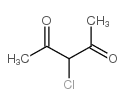Electroactive ligands: the first metal complexes of tetrathiafulvenyl-acetylacetonate.
Julien Massue, Nathalie Bellec, Stéphanie Chopin, Eric Levillain, Thierry Roisnel, Rodolphe Clérac, Dominique Lorcy
文献索引:Inorg. Chem. 44(24) , 8740-8, (2005)
全文:HTML全文
摘要
The reaction of tris(alkylthio)tetrathiafulvalene thiolates with 3-chloro-2,4-pentanedione affords tetrathiafulvalene (TTF) moieties substituted by the acetylacetone function (TTFSacacH), precursors of novel redox-active ligands: the acetylacetonate ions (TTFSacac). These TTFSacacHs have been characterized by X-ray diffraction analyses, and similar trends have been observed, such as a TTF core almost planar and the acetylacetone substituent located in a plane almost perpendicular to the plane formed by the TTF core. Their chelating ability has been demonstrated by the formation of the corresponding M(TTFSacac)2(pyridine)2 complexes in the presence of M(II)(OAc)2.H2O (M = Ni2+, Zn2+). These complexes with TTFSacac moieties, Ni(TTFSacac)2(pyridine)2, 6b, and Zn(TTFSacac)2(pyridine)2, 7b, have been characterized by X-ray diffraction analyses, showing in all structures the metal(II) center chelated by two TTFacac units in the equatorial plane and the octahedral coordination geometry around the metal completed by two axial pyridine ligands. Cyclic voltammetry and UV-visible-near infrared spectroscopic measurements have evidenced a sizable interaction between the two electroactive ligands and the stabilization of a mixed-valence state in the one-electron oxidized complexes.
相关化合物
| 结构式 | 名称/CAS号 | 分子式 | 全部文献 |
|---|---|---|---|
 |
3-氯乙酰丙酮
CAS:1694-29-7 |
C5H7ClO2 |
|
Identifying chelators for metalloprotein inhibitors using a ...
2011-01-27 [J. Med. Chem. 54 , 591-602, (2011)] |
|
Electrochemical behavior of 3-chloro-2,4-pentanedione in the...
1999-02-01 [J. Pharm. Biomed. Anal. 19(1-2) , 193-203, (1999)] |
|
Synthesis and antitumor activities of some new N1-(flavon-6-...
2014-06-01 [Arch. Pharm. (Weinheim) 347(6) , 415-22, (2014)] |
|
Tautomeric properties and gas-phase structure of 3-chloro-2,...
2008-04-10 [J. Phys. Chem. A 112(14) , 3209-14, (2008)] |
|
Structural features of homo-and heteroleptic complexes of co...
[Inorganica Chim. Acta 211(1) , 67-75, (1993)] |